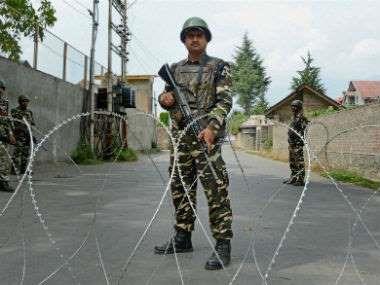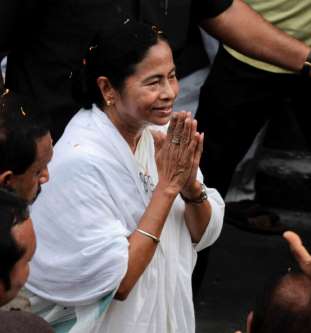July 28, 2016
NEW DELHI – Three kinds of forces that are inimical to India's stability have gathered momentum since 2008. They are generally viewed independent of each other, but each is a potent threat to stability.

July 28, 2016
NEW DELHI – Three kinds of forces that are inimical to India's stability have gathered momentum since 2008. They are generally viewed independent of each other, but each is a potent threat to stability.

The first of these is China, and the second Pakistan. The third is the eruption of a mass of angry and aggressive youth across the Kashmir Valley.
Let us take a broad view of how each of these three has gathered strength since 2008. The resentment of Kashmiri youth exploded during that summer. The transfer of land to the Sri Amarnath Shrine Board was only the spark that lit the piled up tinder.
If one examines that tinder, several causes become apparent.
One was continued militarization and humiliation of citizens after the militancy that began in 1988 had all but ended. The second cause was corruption, extortion and violation by the police. The third: Political insensitivity – lack of concern about people's everyday problems.
KASHMIR ON EDGE
Youth anger exploded again in the summer of 2010. This time, Kashmiris were angry over a series of wanton killings by security forces. Perhaps the most intense anger was over the murder of three young men at an Army camp at Machil.
The young men had gone there looking for work. They were killed, buried and declared to be 'foreign militants.' Lucrative rewards were claimed. Nine Army personnel were indicted. Punishment was awarded by a court martial in 2014.
Public anger in the Valley had subsided relatively soon in 2008, but RSS activists drummed up a counter-agitation in Jammu. They were looking for electoral rewards in the state Assembly elections later that year. They got those rewards – a large number of seats. (They had expected zero before those agitations.)
When agitators in the Udhampur, Jammu and Samba areas closed the national highway for a few days, fresh, hysterical anger erupted in the Kashmir Valley. That is when Pakistan subtly stepped in. By the time a 'Muzaffarabad Chalo' march took place on 11 August, 2008, Pakistan was pulling some of the strings.
CHINA IN UTTARAKHAND
Masarat Alam played the role of a local coordinator. Already, the first few militants of the new round of militancy had gone underground in 2009.
Burhan Wani, who became an iconic hero for young Kashmiris over the past 14 months, joined in 2010. The new militancy has been building apace since then, although it was barely noticeable until 2013.
The uprising across the Valley since Wani was killed on 8 July has made it obvious that there are two aspects to the youth uprising – potentially complimentary aspects.
One is armed militancy. The other is large, angry crowds armed only with stones. On a couple of occasions over the past couple of weeks, grenades and gunshots are said to have come from the middle of stone-pelting crowds.
Let us turn now to the second of the three threats to India's stability. In 2008, Mumbai was attacked. It is a mistake to think that that was a one-off attack, like a fluke, unrelated to a larger gameplan. The 10 men who came to Mumbai were extraordinarily trained. Surely that sort of training module was not developed only for those 10.
INDIA AND PAKISTAN
Since that time, Pakistan has been preparing battlefield nuclear weapons. During this period, militant camps have apparently sprung up again all over the area to the west of the Line of Control from the Valley. Over the past few days, Lashkar chief Hafiz Sayeed has spoken of war against India.
The third potential threat has also shown signs of bellicosity since 2008.
Towards the end of that year, China made it clear that it does not consider the entire state of Jammu and Kashmir to belong legitimately to India, and that it considers itself a stakeholder. It has periodically sent troops into parts of Ladakh and, for a while, stopped giving visas to citizens from this state on Indian passports.
Although these three threats may have nothing to do with each other, we must consider the dangers of two or all of them emerging simultaneously.
Courtesy: Firstpost







































































































